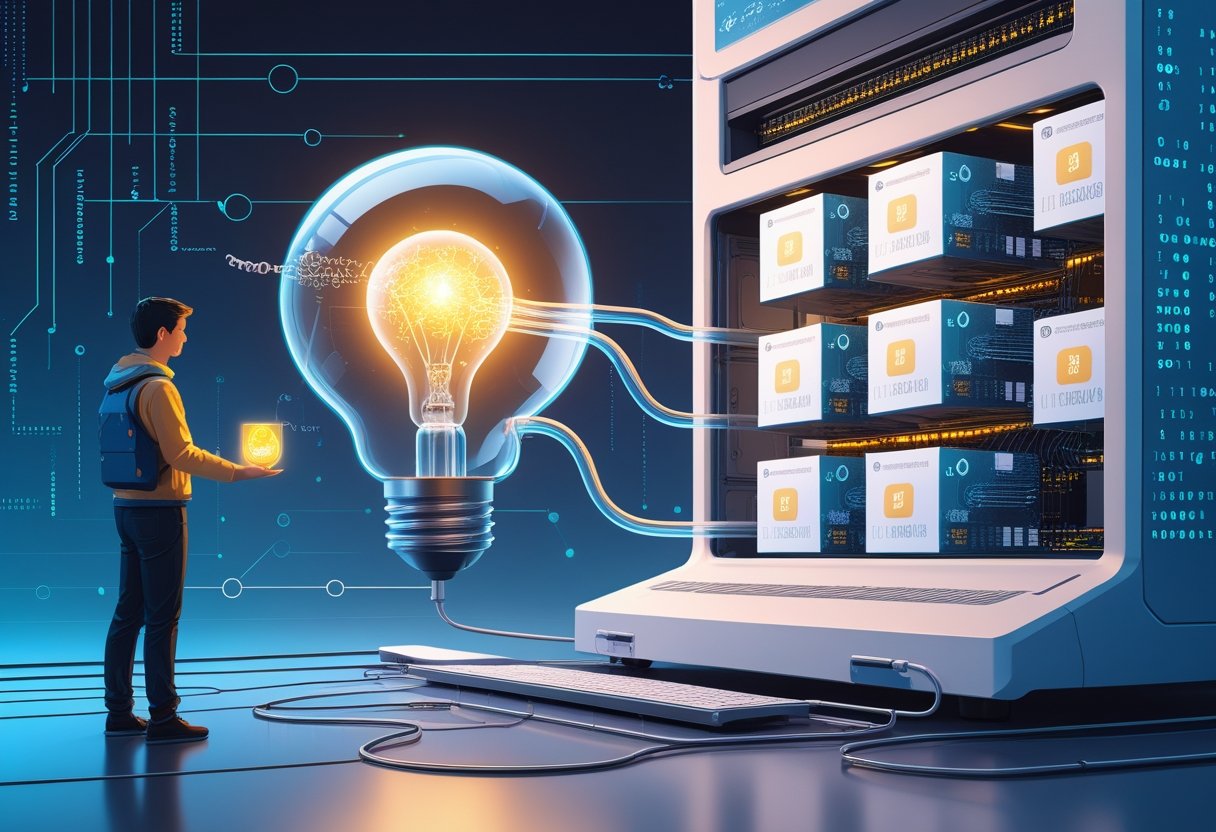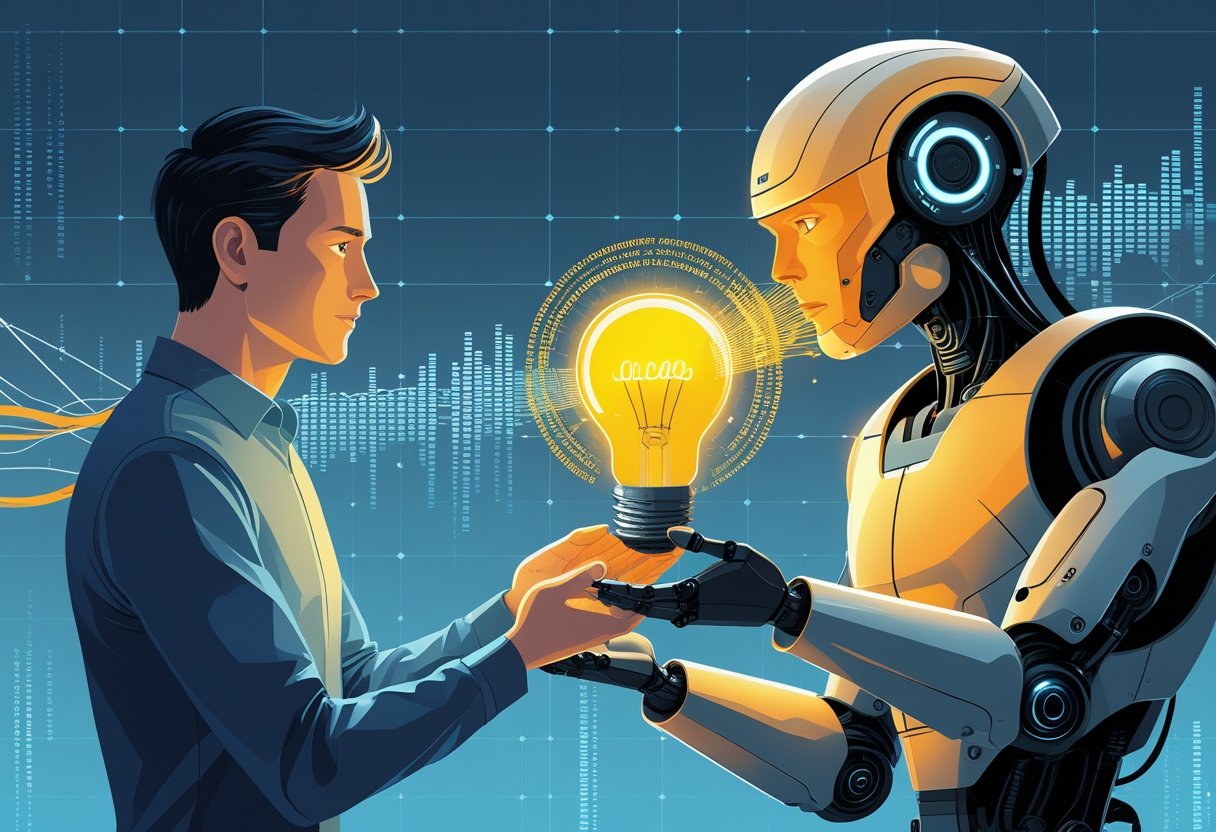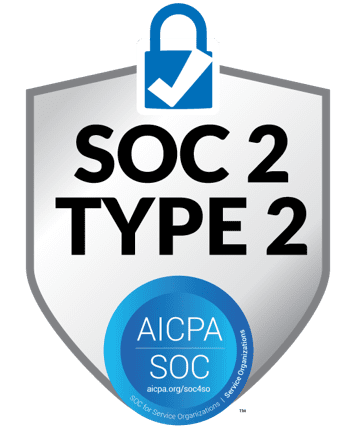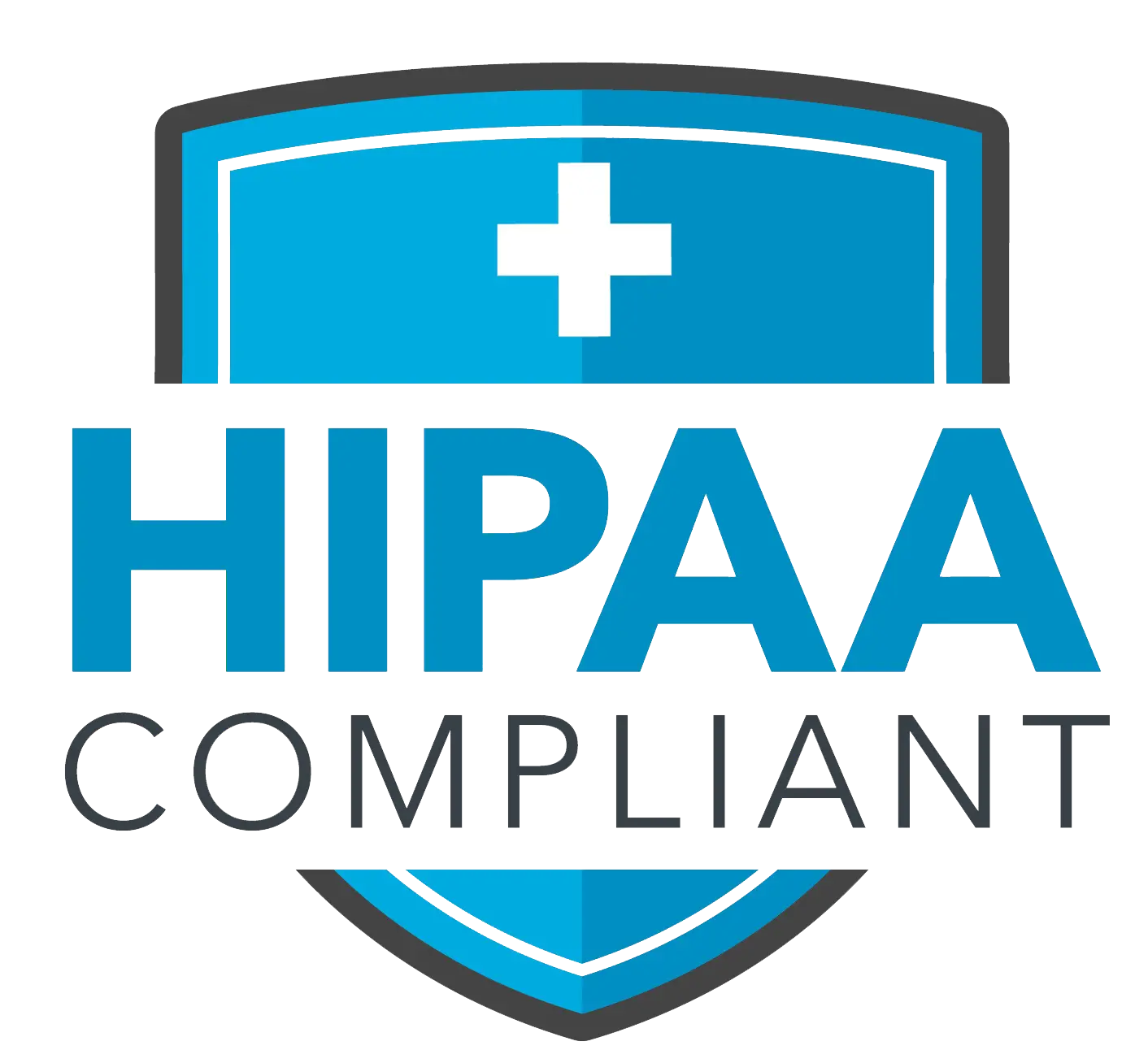When you use free AI tools like ChatGPT, Midjourney, or Google’s Gemini, you might think your ideas and creations stay yours. The reality is more complex and potentially costly for your business.

Most free AI platforms retain broad rights to use your inputs and outputs, often incorporating your intellectual property into their training data or making it available to other users under public licenses. This means the marketing copy you generate, the logo designs you create, or the code you develop could end up training competing AI models or becoming publicly available under creative commons licenses that anyone can use.
The legal landscape around AI-generated content creates additional risks that many businesses don’t fully understand. From how your proprietary information gets transformed into public training data to the real-world cases where companies lost control of their IP through free AI tools, understanding these dynamics is essential for protecting your business assets in an AI-driven world.
How Free AI Tools Use Your Intellectual Property

Free AI platforms collect and utilize your intellectual property through multiple channels during regular use. Your data becomes part of their systems through direct inputs, conversational exchanges, and partnerships with external companies.
Data Inputs and Model Training
When you upload documents, images, or code to free AI tools, this content often becomes training data for future model improvements. Many platforms explicitly state this in their terms of service.
Your uploaded files get processed and stored on company servers. The AI system analyzes patterns, structures, and information within your content.
This analysis helps improve the tool’s responses for all users.
Common data inputs that become training material:
- Business documents and reports
- Creative writing and marketing copy
- Software code and technical specifications
- Images and design files
- Research data and analysis
Some platforms like ChatGPT allow you to opt out of data training. However, most free tools make data collection the default setting.
You must actively change privacy settings to prevent your intellectual property from training future models. The AI tools streamlining IP portfolio management often require access to sensitive patent and trademark data.
This creates additional risks when using free versions of these services.
IP Leakage Through User Interactions
Your conversations with AI chatbots can expose proprietary information that gets stored and potentially reused. Each question you ask and document you share creates a digital footprint.
Free AI tools typically save your chat history indefinitely. This data includes business strategies, technical problems, and creative ideas you discuss with the AI.
Other users might receive suggestions based on patterns learned from your interactions.
Types of IP commonly leaked through conversations:
- Business plans and strategies
- Technical troubleshooting details
- Creative concepts and marketing ideas
- Customer information and data
- Financial projections and analysis
Generative AI systems learn from all user inputs to improve their responses. Your specific business challenges become part of the collective knowledge base.
Many users don’t realize their deleted conversations may still exist in backup systems. The AI company retains this data for model training even after you remove it from your account.
Third-Party Data Sharing Practices
Free AI platforms often share user data with partner companies, advertisers, and research institutions. Your intellectual property becomes part of larger data sets sold or licensed to third parties.
These partnerships allow AI companies to monetize free services. Your business documents, creative works, and technical data have commercial value to companies building competing products or services.
Common third-party data sharing includes:
- Analytics companies studying user behavior
- Research institutions analyzing industry trends
- Partner AI companies improving their models
- Advertising networks targeting business users
- Data brokers selling information to competitors
Some platforms claim to anonymize shared data. However, protecting AI-generated intellectual property remains challenging when your original inputs can be reverse-engineered from patterns.
Cloud storage partnerships create additional exposure points. Your uploaded files may be processed by multiple companies within the AI platform’s network.
Each company in this chain potentially gains access to your intellectual property. International data transfers complicate protection further.
Your IP might be stored in countries with different privacy laws and intellectual property protections than your home country.
From Your Input to Their Output: The Transformation of IP
AI companies transform your intellectual property through sophisticated technical processes and business models. Your private data becomes training material, while your creative outputs get repackaged as commercial products.
Retrieval-Augmented Generation and Proprietary Datasets
Retrieval-Augmented Generation (RAG) systems pull information directly from your documents and data to generate responses. When you upload files to AI tools, they create searchable databases from your content.
Your proprietary information gets stored in vector databases. These systems break down your documents into smaller chunks.
The AI then searches through these chunks when answering questions.
Common RAG implementations include:
- Document analysis tools that learn from your files
- Customer service bots trained on your support tickets
- Code assistants that study your programming repositories
The AI doesn’t just reference your data. It combines information from multiple sources to create new outputs.
Many free AI tools use your uploaded content to improve their models. Your business documents become part of their training data for future versions.
Outputs as Market Products
AI companies monetize the content you create through their platforms. Your prompts and the resulting outputs become valuable datasets for product development.
When you generate images, text, or code, these creations often belong to the AI company. The terms of service typically grant them broad rights to your outputs.
Your contributions become:
- Training examples for improved AI models
- Sample outputs in marketing materials
- Premium features sold to paying customers
Companies package your creative work into subscription services. The AI learns your writing style and preferences.
This knowledge gets built into paid enterprise versions. Free users essentially provide free labor.
Your interactions teach the AI how to better serve premium customers. The transformation process turns your creativity into their competitive advantage.
Repurposing User-Created Content
AI platforms systematically repurpose everything you create. Your original content becomes raw material for their commercial products.
Your writing samples train text generators. Your image uploads teach visual AI systems.
Your code contributions improve programming assistants. The repurposing happens automatically through machine learning processes.
Your content gets analyzed, categorized, and integrated into larger datasets.
Repurposing methods include:
- Style transfer – copying your creative approach
- Content synthesis – combining your ideas with others
- Pattern recognition – identifying successful formats in your work
Your intellectual property loses its connection to you. The AI creates derivative works that compete with your original content.
These new creations enter the market without compensation to you. The cycle continues as more users contribute content.
Each interaction feeds the system that transforms individual creativity into corporate assets.
Risks and Legal Considerations for IP in Free AI Services
Free AI tools create complex legal problems when your intellectual property enters their systems. Legal cases are establishing precedent that will shape IP law for decades, while ownership disputes and patent disclosure issues multiply across the AI landscape.
Ownership and Copyright Challenges
When you input your content into free AI tools, you face immediate ownership questions. Most free platforms claim rights to use your data for training and improvement purposes.
Your original work might lose copyright protection if the AI system incorporates it into outputs for other users. This creates a situation where your intellectual property becomes part of someone else’s product without compensation.
Key ownership risks include:
- Loss of exclusive rights to your content
- Unclear ownership of AI-generated derivatives
- Potential copyright infringement claims against you
AI startups face significant IP risks that directly impact their ability to scale and attract investors. The same risks apply to individual users and businesses.
Your content might be stored indefinitely, even after account deletion. Many platforms reserve broad rights to modify, distribute, and create derivative works from your submissions.
Patentability and Public Disclosure
Sharing your inventions or trade secrets with free AI tools can destroy your ability to get patents. Patent law requires that inventions remain confidential before filing applications.
Any disclosure to an AI system may count as public disclosure. This bars you from getting patent protection in most countries, including the United States.
Patent risks from AI tool use:
| Risk Type | Impact | Timeline |
|---|---|---|
| Public disclosure | Bars patent applications | Immediate |
| Prior art creation | Weakens future patents | Permanent |
| Trade secret loss | Eliminates protection | Irreversible |
Your patent application becomes vulnerable if competitors can prove you disclosed the invention through AI platforms. Even private conversations with AI chatbots might qualify as public disclosure under current law.
The one-year grace period for patent filing in the US may not protect you. Many other countries have absolute novelty requirements that make any prior disclosure fatal to patent applications.
Liability for Infringement
Using AI tools without reviewing outputs presents substantial risks including copyright infringement and trademark violations. You become liable when AI generates content that violates others’ intellectual property rights.
Free AI platforms typically disclaim responsibility for infringement. Their terms of service often require you to indemnify them against legal claims.
You face direct liability when AI outputs contain copyrighted text, images, or code from other sources. Courts may hold you responsible even if the infringement was unintentional.
Your liability exposure includes:
- Monetary damages from copyright holders
- Legal fees for defending infringement claims
- Injunctive relief stopping your business activities
The AI system’s training data often includes copyrighted material without permission. When the AI reproduces this content in your outputs, you become the infringer in the eyes of copyright law.
Case Studies: Generative AI Tools and Real-World IP Impacts
Major AI platforms face ongoing legal battles over training data usage, while businesses struggle with ownership questions when AI generates content using copyrighted materials. These cases show how quickly IP disputes can emerge in the AI space.
Stable Diffusion and Artistic Styles
Artists filed lawsuits against Stability AI, claiming Stable Diffusion was trained on millions of copyrighted images without permission. The platform can replicate specific artistic styles and techniques that took artists years to develop.
Getty Images sued Stability AI for using over 12 million copyrighted photos from their database. The images included Getty’s watermarks, which sometimes appeared in AI-generated outputs.
Key concerns for users:
- Generated images may contain copyrighted elements
- Commercial use could trigger infringement claims
- Artists can identify their work in AI training sets
Your business faces risk when using Stable Diffusion outputs commercially. Even if the AI creates “new” images, they may incorporate protected artistic elements from the training data.
The legal battles continue in courts worldwide. Early decisions will shape how AI companies handle copyrighted training materials.
Midjourney and Content Rights
Midjourney’s terms of service create confusion about image ownership. You receive certain usage rights, but the company retains broad licenses to your prompts and generated content.
The platform was trained on internet images without explicit permission from creators. Professional photographers and illustrators found their work replicated in Midjourney’s outputs.
Ownership issues include:
- Who owns AI-generated images
- Rights to sell or license outputs
- Attribution requirements
- Commercial usage limits
Your prompts become part of Midjourney’s data. The company can use them to improve their service or for other purposes outlined in their agreement.
Some generated images closely match existing copyrighted works. This creates liability risks when you use them in marketing, products, or publications.
Startups Navigating AI-Powered IP Risks
Patent offices worldwide are establishing guidelines for AI-assisted inventions as startups increasingly rely on generative AI tools for product development.
Your startup must address several IP challenges when using AI tools:
Patent risks:
- Listing human inventors on applications
- Determining AI contributions to inventions
- Meeting disclosure requirements
Copyright concerns:
- Training data usage in outputs
- Commercial licensing needs
- Attribution requirements
Generative AI tools require enormous amounts of data from internet sources, creating potential infringement issues for your business applications.
Smart startups develop AI usage policies before problems arise. You need clear guidelines for employees using AI tools in research, content creation, and product development.
Protecting Your Intellectual Property in the Age of Free AI
Companies need specific strategies to safeguard their innovations when using free AI tools, from trade secret protections to careful patent applications. Legal and technical safeguards work together to prevent your valuable IP from becoming training data for competitors.
Strategies for Startups and Innovators
Startups face unique challenges when protecting intellectual property in AI development. Your limited resources require smart choices about which protections to prioritize.
Trade secrets offer the strongest protection for AI innovations right now. Unlike patents, you don’t need to disclose your methods publicly.
Keep your AI processes confidential and require employees to sign non-disclosure agreements. Document everything your team creates.
AI-generated content receives different legal treatment than human-created work. Track which parts humans developed versus AI assistance.
Avoid sharing detailed technical information at conferences or online forums. Web crawlers collect this data for training new AI models.
Create internal policies for AI tool usage. Specify which tools employees can use and what data they can input.
Ban sensitive information from free AI platforms entirely.
Patents, Copyrights, and Contracts
Patent protection for AI inventions faces major hurdles in current law. You must prove human invention rather than AI creation.
Patenting AI-related innovations is challenging because algorithms count as abstract ideas. Your patent application needs to show practical applications beyond efficiency improvements.
Focus on specific technical solutions rather than general AI methods. Copyright offers limited protection for AI-generated content.
The Copyright Office only protects human-created portions of your work. Keep detailed records separating human contributions from AI assistance.
Contracts provide your strongest legal foundation. Include specific IP clauses in employee agreements, vendor contracts, and customer terms.
Address AI tool usage explicitly in all business relationships.
Key contractual protections include:
- Non-disclosure agreements for all team members
- Work-for-hire clauses covering AI-assisted creations
- Vendor agreements prohibiting data sharing
- Customer contracts protecting your methodologies
Mitigation Through Technical and Legal Safeguards
Technical controls prevent accidental IP exposure to free AI tools. Install software that blocks employees from uploading sensitive files to public platforms.
Monitor network traffic for unauthorized data transfers. Create separate development environments for sensitive projects.
Use air-gapped systems that cannot connect to external AI services. This prevents inadvertent data sharing during development.
Implement data classification systems. Label information by sensitivity level and restrict access accordingly.
Train employees to recognize confidential data before using any AI tools. Regular audits identify potential IP leaks.
Review what information employees share with AI platforms. Check if your proprietary methods appear in AI-generated outputs from competitors.
Essential technical controls:
- Network monitoring software
- File upload restrictions
- Access controls by classification level
- Regular security audits of AI tool usage
Frequently Asked Questions
Free AI tools create specific risks around data retention, training use, and limited user control over generated content. Understanding platform policies and legal frameworks helps you make informed decisions about protecting your intellectual property.
What are the privacy implications of using free AI tools that can capture IP data?
Free AI platforms often retain broad rights to use your input data for training and improving their models. Your prompts, uploaded files, and creative inputs become part of their dataset.
Most free services store your conversations and content indefinitely. This data can be accessed by platform employees for safety reviews and model development.
Your proprietary business information, creative concepts, and confidential data may be exposed to other users through similar outputs. AI models can reproduce patterns from training data in responses to other users.
How can intellectual property be compromised when engaging with free AI software?
Your original ideas and creative works become training material for the AI system when you use free platforms. The platform gains the right to learn from and potentially reproduce elements of your IP.
Generated content on free tiers often lacks exclusivity. Other users may receive similar outputs because AI models can produce comparable results from similar prompts.
Some platforms like Midjourney automatically license free-tier outputs under Creative Commons, making your generated content available for others to use with attribution.
What measures can individuals take to protect their IP when using AI services offered at no cost?
Avoid inputting proprietary information, trade secrets, or confidential business data into free AI platforms. Use generic examples instead of real company details or sensitive information.
Review each platform’s terms of service before use. Understanding ownership and licensing policies helps you know what rights you retain or surrender.
Consider upgrading to paid plans when available. Premium tiers typically offer better privacy protections and exclusive rights to generated content.
Use separate accounts for personal versus business purposes. This limits cross-contamination of different types of intellectual property.
Can the use of free AI tools lead to unintended IP sharing, and how does this occur?
AI models trained on your inputs can inadvertently reproduce your ideas in responses to other users. This happens because the model learns patterns and concepts from all user interactions.
Public or community features in free AI tools expose your prompts and outputs to other users. Discord-based platforms and shared galleries make your creative work visible to the broader community.
Data breaches or security incidents could expose your private conversations and uploaded content. Free platforms may have fewer security resources than enterprise services.
What are the legal consequences of intellectual property being used without consent via free AI platforms?
Legal recourse is often limited when you’ve agreed to terms allowing the platform to use your data. Most free AI services include broad licensing clauses that protect them from IP claims.
Proving that your specific IP was used without consent becomes difficult in AI systems. The black-box nature of model training makes it hard to trace how your input influenced outputs.
Patent and trademark protections may not apply to AI-generated variations of your IP. Copyright law is still evolving around AI-created content and derivative works.
In what ways do creators retain control over their IP when utilizing free AI applications?
Your original works outside the AI platform remain fully protected by existing IP rights.
Using AI tools doesn’t automatically transfer ownership of your underlying intellectual property.
You maintain copyright in your prompts and original input text.
However, the generated outputs may have different ownership rules depending on the platform’s terms.
Trade secrets and confidential information retain protection if you don’t disclose them to AI platforms.
The key is keeping sensitive IP separate from AI interactions.
Some platforms allow you to delete your data or opt out of training use.
Check privacy settings and data retention policies to exercise available controls.


